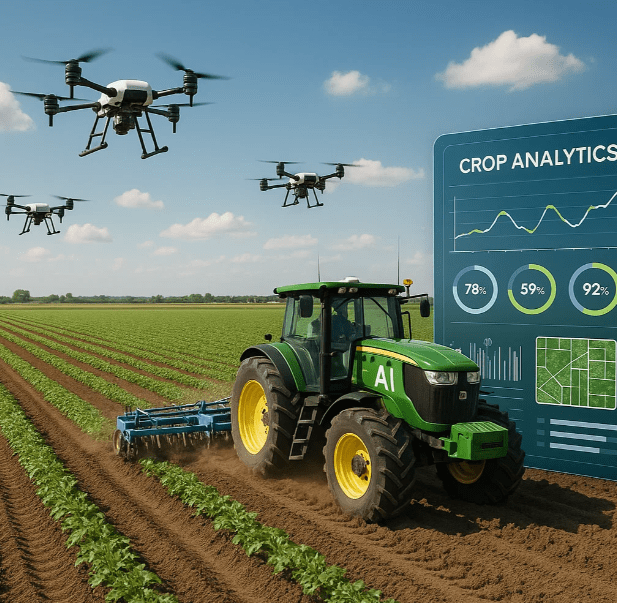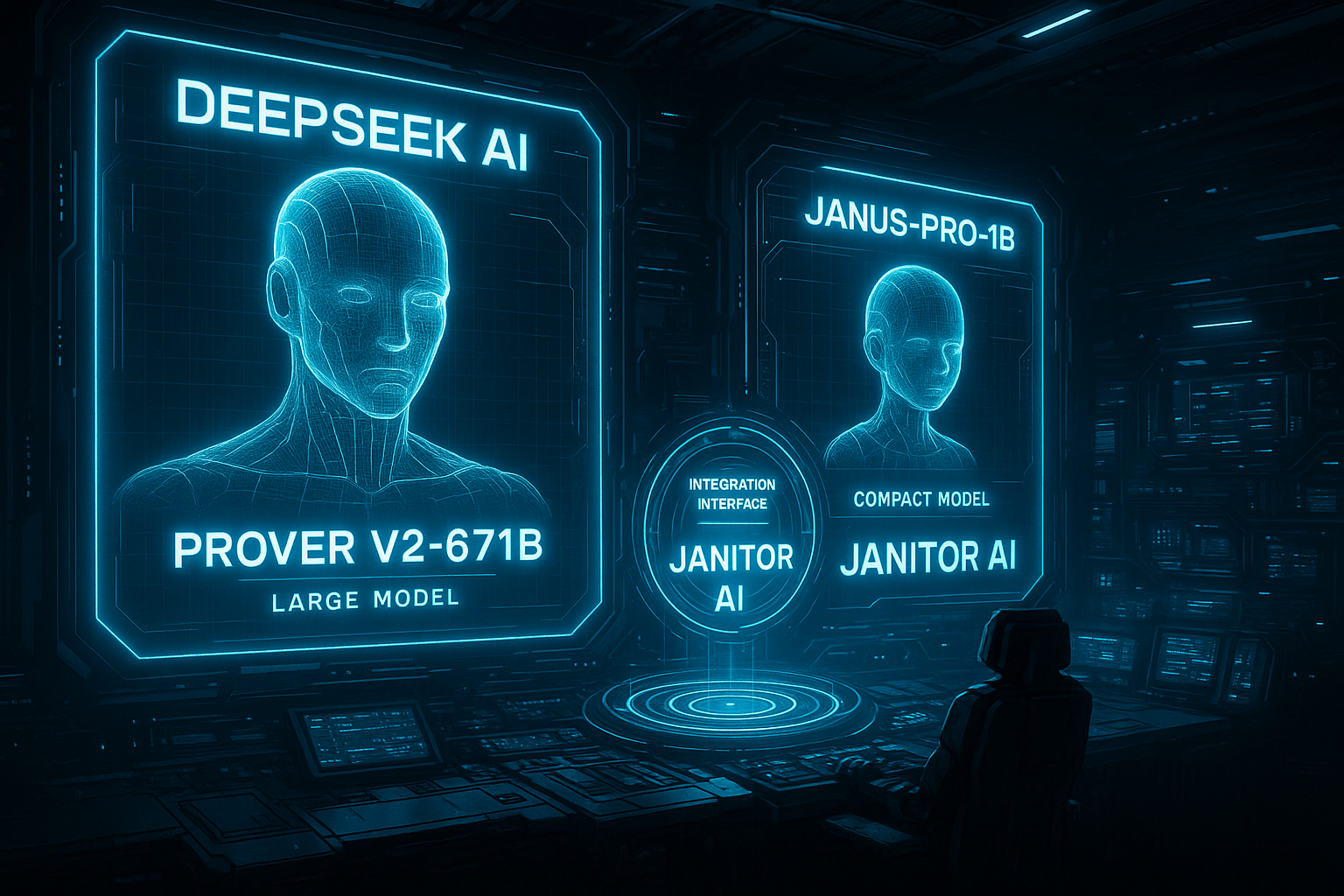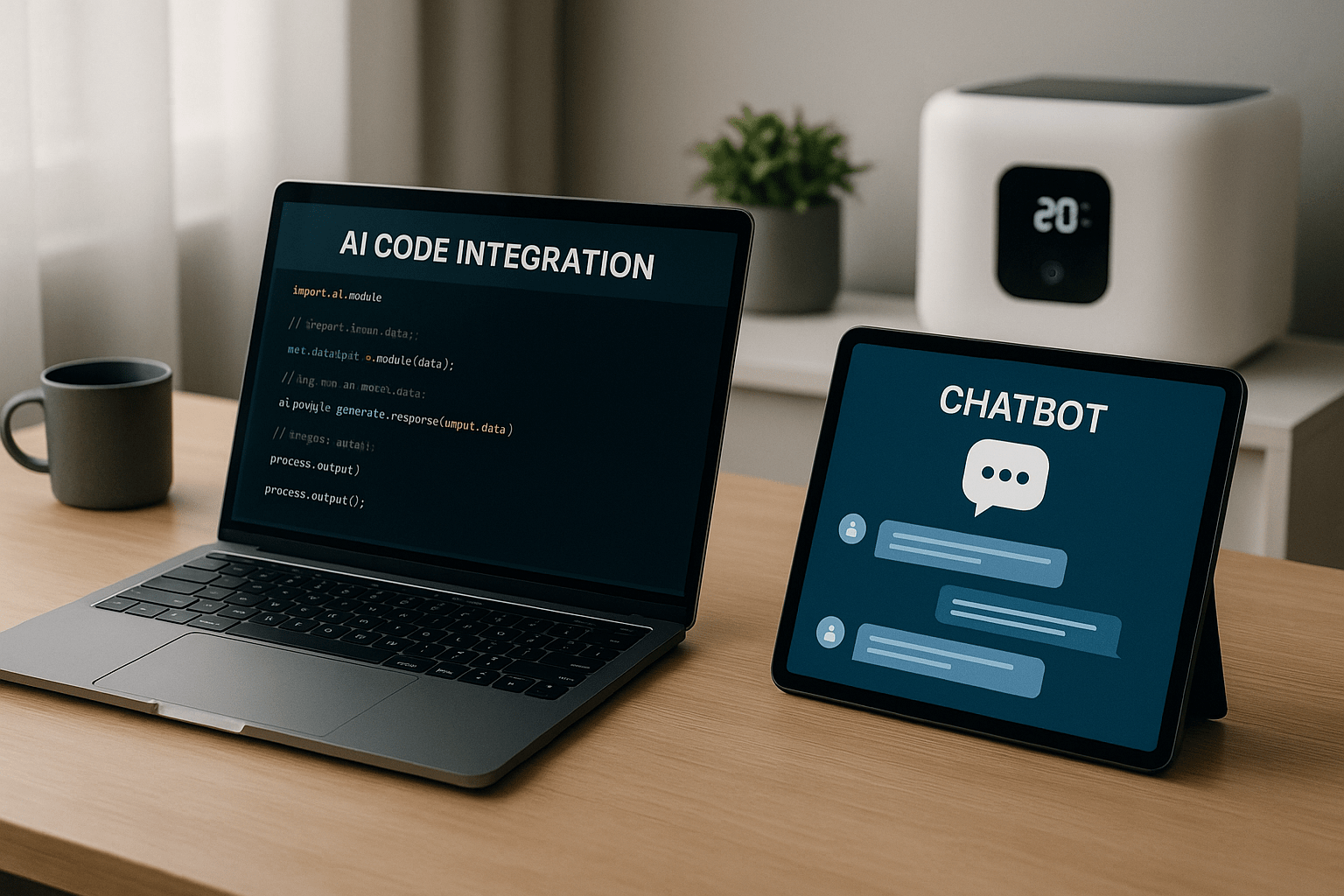The international agriculture sector is in crisis. The pressures of climate change, human population increase, and food production sustainability have created a pressing need for revolution. Some of the most disruptive technologies to enter that sector are Artificial Intelligence (AI) and predictive analytics.
From increasing crop productivity to maximizing the use of resources, these technologies are no longer a choice—they are a necessity. At Pensora, we delve into how AI in crop yield enhancement, agri-data analytics, and precision agriculture are revolutionizing the way the world farms.
The Evolution of Farming: From Manual to Smart Agriculture
Farming has always been based on observation, gut feel, and seasonal rhythms. But data is increasingly the new soil. Old school farming techniques are giving way to a new age fueled by intelligent farming systems that marry sensors, satellite imaging, AI models, and real-time decision-making platforms.
Agricultural predictive analytics is one of the pillars of this revolution. It can predict anything from the best time to plant to pest infestations, based on a historical dataset married to live variables.
The Role of AI in Crop Yield Improvement
AI for crop yield enhancement encompasses a range of tools that enable farmers to make more informed decisions. From tracking plant wellness through drones and satellites to employing machine learning algorithms for crop planning, AI is assisting farmers in boosting productivity with reduced effort and less input.
Major Applications of AI in Yield Optimization:
- Soil Monitoring: AI systems examine soil wellness through IoT sensors and satellite imagery, enabling crops to be sown in the best possible conditions.
- Weather Forecasting: Machine learning algorithms work on decades of climate information to predict rain, drought, or frost so that proactive crop planning can be done.
- Seed Selection and Planting: AI works on genotype and phenotype data to suggest optimal seed types for given regions and climates.
Fertilizer and Pesticide Optimization: AI minimizes excessive use by providing accurate application time and amount, enhancing sustainability.
Farmers are no longer sowing—they’re coding. And it’s accelerating both yields and profit.
Precision Farming: Data-Driven Decision-Making on the Field
Precision farming, or site-specific crop management, employs technology to measure and react to variation in the field. With GPS, remote sensors, and artificial intelligence, farmers can farm at a micro level, to individual rows or plants.
This is where predictive analytics and agriculture data analytics come together in smart farming. Instead of spraying water or fertilizer across the board, smart systems study the precise requirements of various zones of a field.
Advantages of Precision Agriculture:
- Lower input costs (pesticides, fertilizer, water)
- Better quality and yield of crops
- Instant decision-making against weather and disease attacks
- Less environmental footprint through efficient use of resources
By using AI in conjunction with precision farming, farmers are able to plan operations with accuracy, conserving resources while increasing results.
Predictive Analytics in Agriculture: The Intelligence Behind Smart Farming
At its core, predictive analytics in agriculture forms the basis of smart farming. It concerns using data, algorithms, and models to predict what is likely to happen, often before it takes place. It means in agriculture being able to anticipate crop diseases, predict yield potential, and manage supply chains.
Common uses of predictive analytics in agriculture:
- Yield Prediction: The farmers can predict the expected yields and make proper plans based on weather patterns, soil health, and the history.
- Pest and Disease Forecasting: Computer models identify patterns indicating pest infestations or disease outbreaks before they become contagious.
- Irrigation Scheduling: Systems integrate weather forecasts and soil moisture content and forecast when and how much to irrigate.
- Market Forecasting: Forecasting models help to estimate market demand and pricing patterns, providing farmers with a competitive advantage.
At Pensora, we’ve witnessed how farms using these tools not only minimize risks but also open up new possibilities for efficiency and sustainability.
Case Studies: AI-Powered Farming in Action
Let’s examine a few actual examples of how AI in agricultural data analytics is making a difference:
India: AI-Driven Advisory Services
Indian startups are providing AI-driven mobile applications that give farmers customized advice on when to plant, irrigate, or harvest. The sites employ satellite images, real-time climate information, and machine learning to optimize yields in areas that are haunted by erratic monsoons.
U.S.: Precision Spraying with AI
Firms such as Blue River Technology are applying robotics and computer vision to spray herbicides on weeds and not on crops. This level of precision has reduced the use of chemicals by up to 90%, enhancing crop quality while keeping the environment safe.
Africa: Remote Crop Monitoring
In some regions of Sub-Saharan Africa, AI and remote sensing enable crops to be monitored remotely from space, signaling farmers to pest and nutrient deprivation in near real-time—without human visits to the farm.
Challenges and Limitations of AI in Agriculture
While its potential is tantalizing, using AI and predictive analytics in agriculture isn’t without issues:
- High Cost of Deployment: AI solutions often call for up-front investments in sensors, connectivity, and computing capacity.
- Data Quality and Availability: Reliable, high-quality data is required for AI to function properly. This is unavailable in developing areas.
- Technical Competence: Most farmers have not yet reached the stage of interpreting or responding to AI-based insights.
- Gaps in Connectivity: Rural spaces frequently experience poor internet connectivity, hindering real-time data transmission and processing.
To tackle these challenges, they need to be addressed through a mix of policy, investment in infrastructure, and training initiatives. As more people adopt, economies of scale and rising competition should see costs fall and access increase.
The Future of Predictive Analytics for Smart Farming
The future for predictive analytics for smart farming is very bright. With technology becoming increasingly affordable, smallholder farms will start to gain just as much benefit as large commercial operations.
Some of the emerging trends include:
- Edge AI Devices: In-situ processing on drones and tractors, cutting reliance on cloud connectivity.
- AI-Powered Autonomous Machinery: Autonomous tractors and harvesters steered by predictive models.
- Blockchain for Agricultural Supply Chains: Facilitating traceability from farm to fork, boosting consumer confidence.
- Integrating Satellite Data: For even higher precision in crop monitoring and yield estimation.
At Pensora, we keep tabs on these advancements in order to offer future-focused perspectives on how technology is transforming agriculture.
Ethical and Environmental Considerations
With AI power comes responsibility. Ethical use in agriculture needs to take into account:
- Data Ownership: Farmers should own the data produced on their fields.
- Environmental Sustainability: AI needs to promote long-term ecological sustainability, not short-term profits.
- Fair Access: Technology tools need to be made available to farmers from various regions and economic strata.
By creating ethical parameters, the agricultural AI revolution can be both inclusive and sustainable.
Conclusion: Building a Smarter Future
AI and predictive analytics in the agricultural sector are no longer the province of the pilot program—today, they are the building blocks. From fine-tuning inputs to forecasting crop yields, these technologies are enabling farmers to grow more with less.
The integration of precision farming, data analytics in agriculture, and AI-based decision-making is creating a more robust and productive farm system. Challenges exist, yet the path is clear: an intelligent, data-driven future for global food production.
As this revolution rages on, Pensora is dedicated to bringing the newest intelligence, trends, and tools that are transforming how we cultivate our food.











Leave a Reply